Are you wondering if it’s possible to use a shop vac without a filter?
You’ve come to the right place. In this article, we delve into the details of shop vac filter usage, exploring the benefits and risks associated with removing the filter, as well as situations when it might be appropriate to do so.
Additionally, we discuss alternative filtration methods and provide expert insights to help you make informed decisions about your shop vac’s performance and maintenance.
Keep reading to find out everything you need to know about using a shop vac without a filter.
Key Takeaways
- It is possible to use a shop vac without a filter, but it is not generally recommended due to the potential for reduced performance and damage to the vacuum cleaner.
- The primary function of a filter in a shop vac is to catch fine dust, ensure proper airflow and suction, and prevent clogging and damage to the vacuum’s internal components.
- Wet vacuuming is the most recommended situation for using a shop vac without a filter, as there is no dust involved, and moisture could damage the filter.
- Using water as a filtration system is another method for using a shop vac without a filter, but it may not be as effective in catching fine dust and protecting the vacuum’s internal parts.
- To improve the performance of a shop vac filter, choose the right type of filter for your needs, maintain and replace it regularly, and follow the manufacturer’s guidelines for proper vacuum usage.
Table of Contents
- Key Takeaways
- How Does a Shop Vac Work?
- Does Shop Vac Need Filter and Bag?
- What is The Function of a Filter in a Shop Vac?
- Best Way to Use a Shop Vacuum without a Filter
- Using a Shop Vac Without a Filter – A Step-by-Step Guide
- How to Improve the Performance of the Filter?
- Optimizing Usage in Various Environments
- Frequently Asked Questions

How Does a Shop Vac Work?
A shop vac, or a wet-dry vacuum, is a versatile and powerful cleaning tool commonly used in workshops, construction sites, and commercial buildings. It operates on the same basic principles as a regular household vacuum cleaner, but it features a more robust motor and enhanced suction capabilities, allowing it to tackle a wider range of cleaning tasks.
Cleaning Capabilities of a Shop Vac
Thanks to its powerful motor and superior suction, a shop vac can handle various types of debris, from large to small. It is capable of picking up stones, sand, nails, wood pieces, and lumps of garbage without any difficulty. Its high efficiency and power also enable it to cover larger surface areas, making it a valuable tool for demanding cleaning tasks. But, can it handle glass? Find out if a shop vac can pick up glass in our detailed guide.
Wet-Dry Functionality
One of the key features that set shop vacs apart from regular vacuum cleaners is their ability to handle both dry and wet messes. For instance, if your basement gets flooded after a storm or if you accidentally spill a large amount of liquid on your floor, a shop vac can quickly and effectively remove the water. However, to use a shop vac for wet vacuuming, certain adjustments need to be made beforehand, such as removing the filter or installing a foam sleeve filter specifically designed for wet vacuuming.
Does Shop Vac Need Filter and Bag?
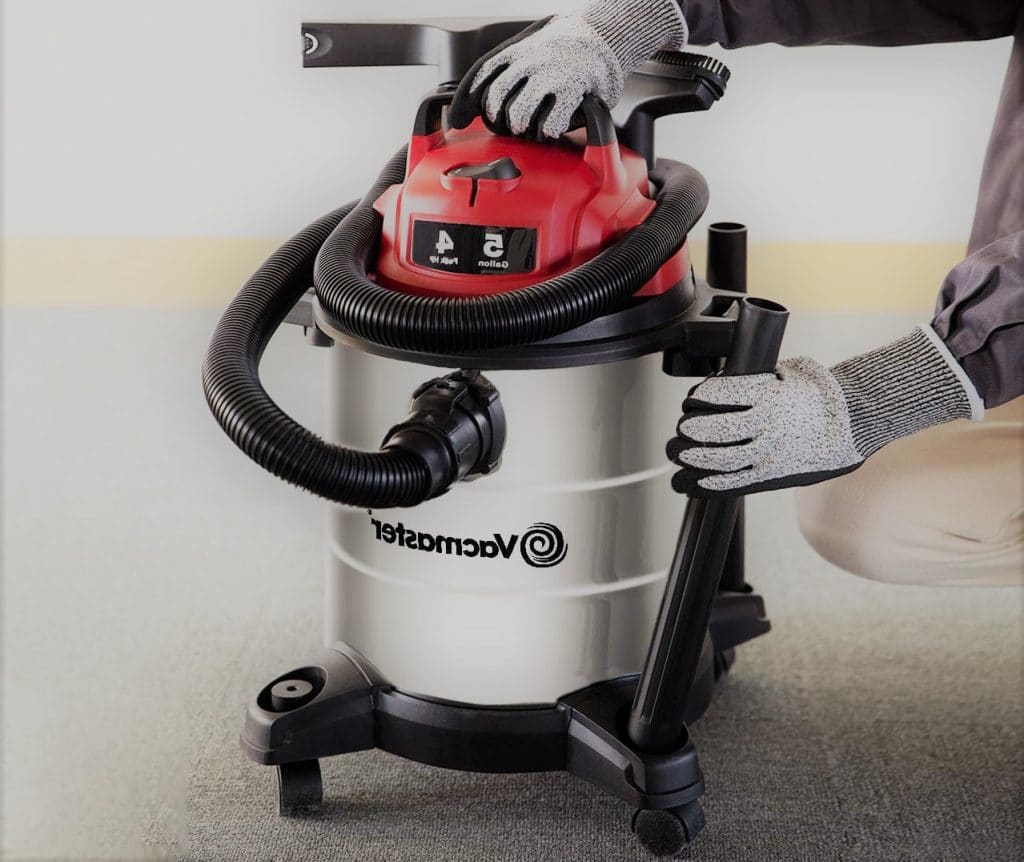
While a shop vac can be a powerful tool for cleaning up debris, it is important to understand why shop vacs need filters. Without a filter, the vacuum will quickly become clogged and will not work as effectively. A filter helps to trap particles and prevent them from entering the vacuum motor, which can cause damage. In addition, a filter helps to improve the suction power of the vacuum by allowing air to flow more freely through the machine. For these reasons, it is important to use a filter with your shop vac.
What is The Function of a Filter in a Shop Vac?
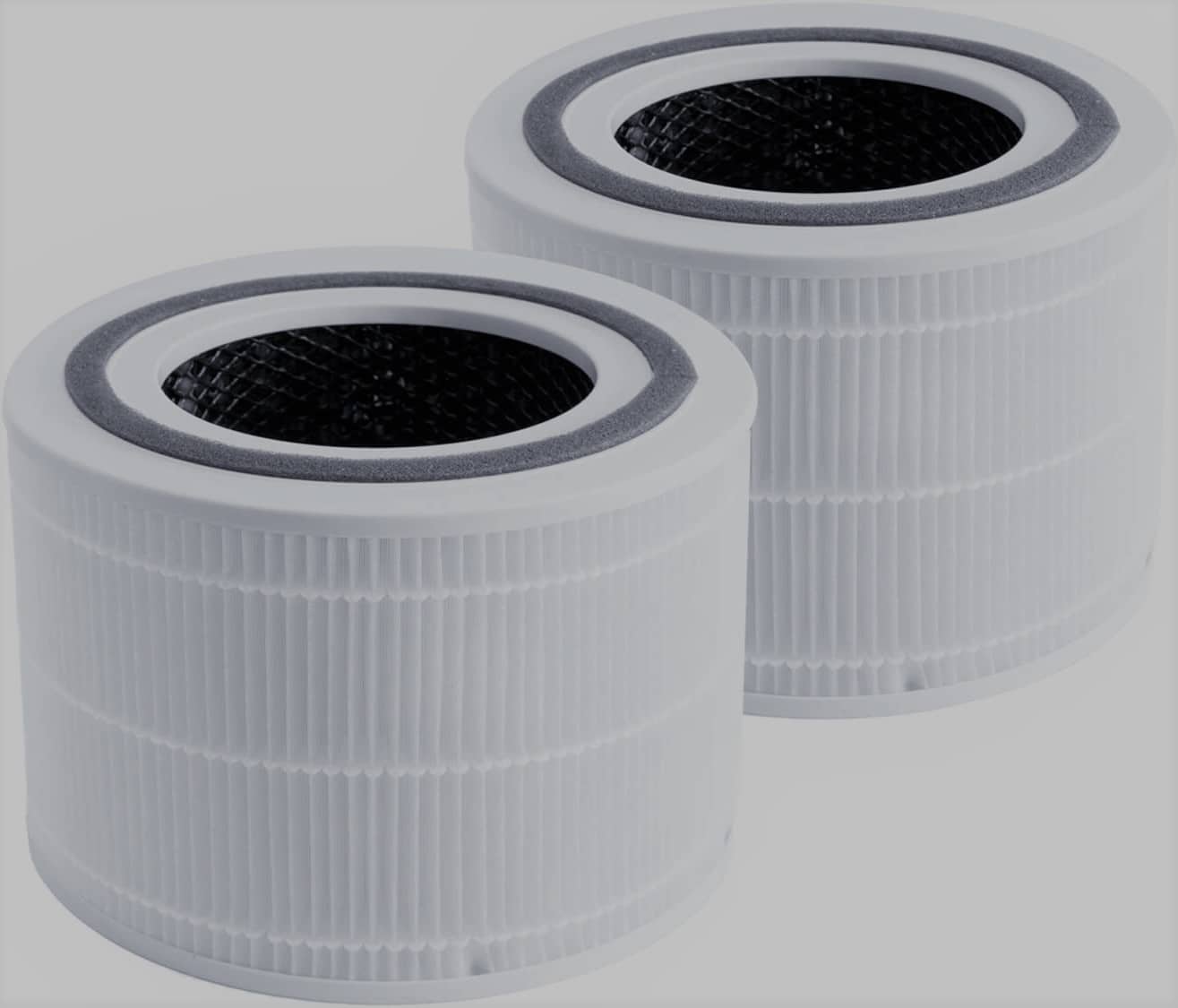
Filters play a crucial role in the proper functioning of a shop vac, as they help maintain the vacuum’s performance and protect its internal components from damage.
Ensuring Airflow and Suction
For a vacuum cleaner to effectively pick up debris and dust, it needs adequate airflow and suction. A filter helps achieve this by trapping fine dust particles and preventing them from clogging the vacuum’s air pathways. Without a filter, the airflow would be restricted, which would negatively impact the suction capacity of the shop vac. Moreover, the vacuum cleaner could release the collected dust back into the environment through its exhaust system.
Preventing Clogging and Damage
Using a shop vac without a filter can lead to clogging, which in turn can cause damage to the vacuum’s motor and other internal components. The filter’s primary function is to capture particles and prevent them from entering the motor, where they can cause wear and tear. Additionally, a filter helps improve the suction power of the vacuum by allowing air to flow more freely through the machine. For these reasons, it is essential to use a filter with your shop vac to ensure its longevity and optimal performance.
Types of Filters
There are various types of filters available for shop vacs, each designed for specific cleaning tasks:
- Standard cartridge filters: These are suitable for general-purpose cleaning and can handle everyday dust and debris.
- Fine dust cartridge filters: These filters are designed for capturing smaller particles, such as drywall or cement dust, making them ideal for construction and woodworking environments.
- HEPA filters: High-Efficiency Particulate Air (HEPA) filters can capture even smaller particles, like allergens and mold spores, providing a higher level of filtration for sensitive environments.
- Foam sleeve filters: These filters are used for wet vacuuming and are designed to prevent debris from reaching the motor while allowing water to pass through.
Choosing the Right Filter
To ensure optimal performance and protection for your shop vac, it’s crucial to choose the right filter for your specific cleaning needs. For example, if you’re working in a construction site with lots of fine dust, a fine dust cartridge filter would be the best choice. On the other hand, if you plan to use your shop vac for wet vacuuming, a foam sleeve filter would be the most suitable option. Always refer to your shop vac’s user manual for guidance on selecting the appropriate filter for your specific model and cleaning tasks.
| Filter Type | Best For | Usage Tips |
|---|---|---|
| Standard Cartridge | Everyday use, common household debris | Use for general cleaning tasks involving dust, dirt, and small particles |
| Foam Sleeve | Wet vacuuming | Remove standard filters when vacuuming liquids or wet surfaces to prevent damage |
| Fine Dust | Fine particles like drywall dust | Ideal for woodworking projects, fireplace ash, or other fine debris that requires a higher level of filtration |
| High-Efficiency | Allergens, mold spores | Use when dealing with allergens or sensitivities to ensure the cleanest air quality possible |
Best Way to Use a Shop Vacuum without a Filter
While it is generally not recommended to use a shop vacuum without a filter, there are some instances where it may be acceptable. In such cases, it is crucial to follow proper guidelines to avoid causing damage to the vacuum.
Wet Vacuuming
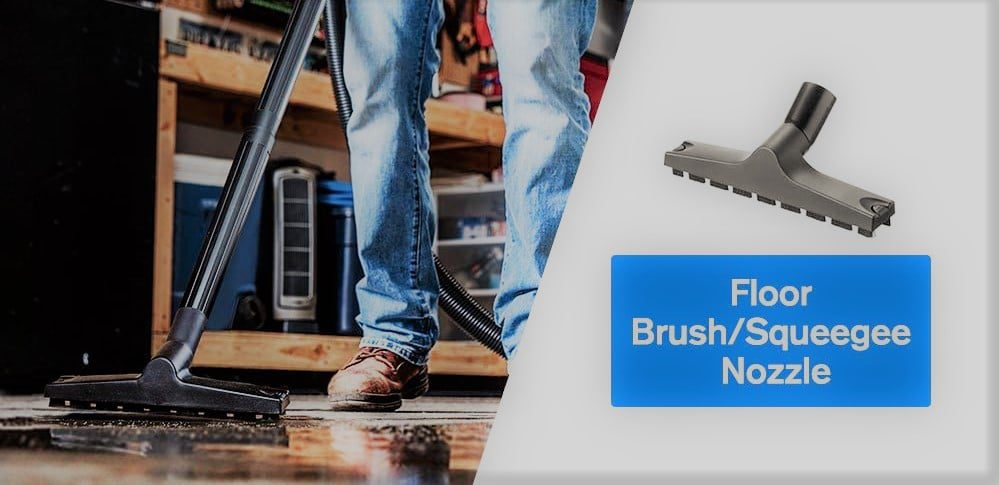
One way to use a shop vac without a filter is when vacuuming wet areas or using the vacuum as a water pump. Since the main purpose of a filter is to prevent dust from entering the vacuum, it becomes less necessary when cleaning liquids or wet surfaces, as there is no dust involved. In fact, leaving the filter in place while wet vacuuming could damage it due to moisture. Therefore, it is better to remove the filter when dealing with wet messes. Make sure to follow the manufacturer’s instructions for your specific shop vac model to ensure safe and effective wet vacuuming.
Wet vacuuming is the most recommended situation for using a shop vac without a filter, as there is no dust involved, and moisture could damage the filter. However, improper use during wet vacuuming can lead to problems such as the shop vac blowing out water. Understand why a shop vac might blow out water during wet vacuuming.
Using Water as a Filtration System
Another method of using a shop vac without a filter is to utilize water as a filtration system. In this technique, you would fill the vacuum cleaner’s tank with a few gallons of water after removing the filter. As debris is sucked into the vacuum, the water traps dust particles, allowing solid debris to pass into the collection bag. This method can improve suction capacity and airflow, and it allows you to work longer without needing to change filters.
However, this method is not foolproof and may not capture all fine dust particles, which means it does not provide complete protection for your vacuum. If you choose to use this method, it is best to work in an open space or outdoors, as the vacuum may still release some dust back into the cleaning area.
People who use this method claim that it helps improve the vacs suction capacity and airflow. While that’s debatable, the method has one simple advantage; it allows you to work more without the need to change filters. This helps if you have a big job to do and plenty of dust, especially in construction and woodworking sites.
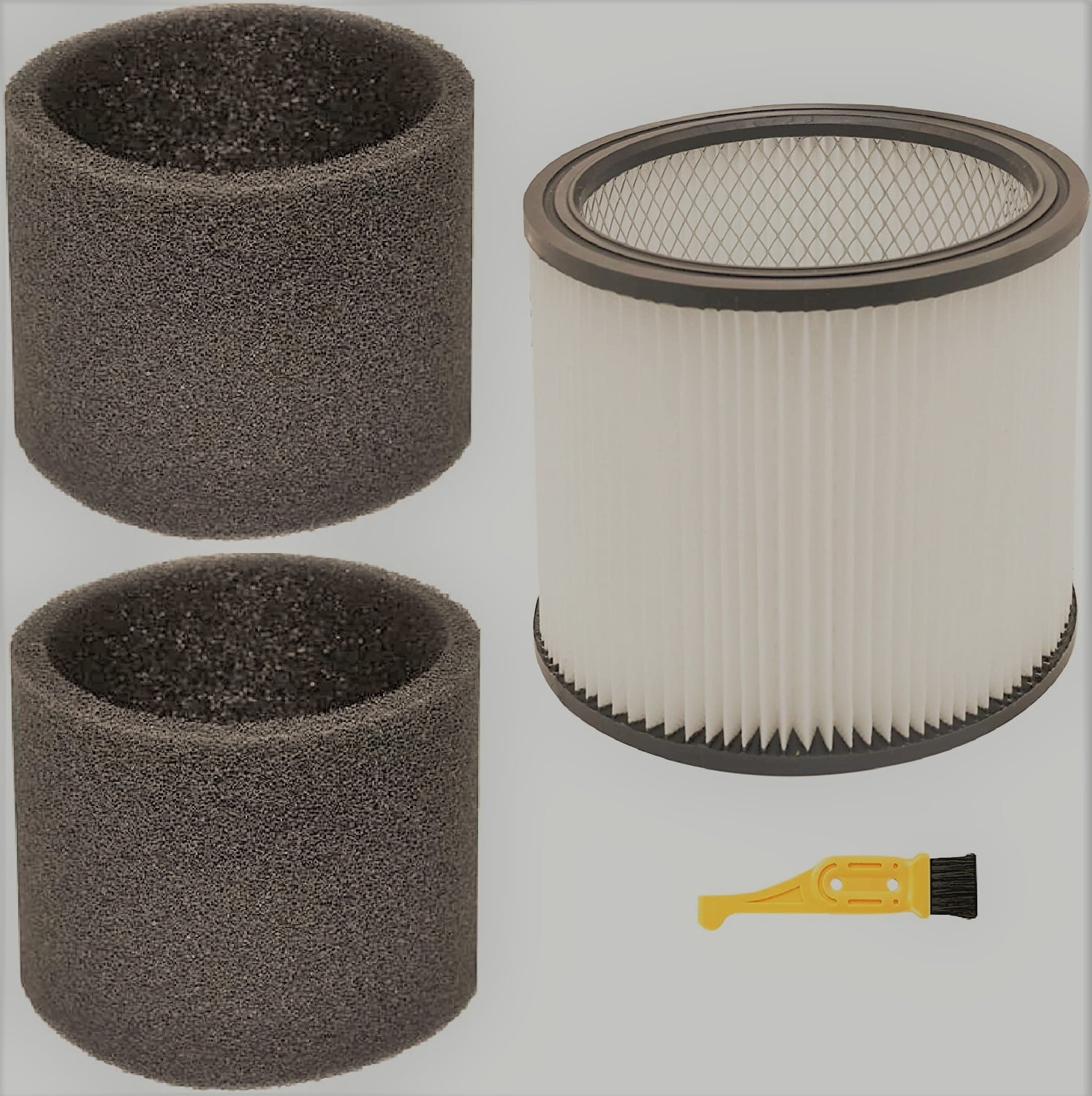
Ensuring Proper Maintenance and Use
If you decide to use your shop vac without a filter, it is essential to take extra care in maintaining and using the vacuum to prevent damage. Make sure to:
- Regularly clean and inspect the vacuum’s interior components to ensure no debris has entered the motor or other parts.
- Use the appropriate attachment for the type of debris you are vacuuming. For example, use a wider nozzle for larger debris and a crevice tool for tight spaces.
- Monitor the vacuum’s performance closely and address any signs of reduced suction or unusual noises promptly.
- Always refer to the manufacturer’s guidelines for proper use and maintenance of your specific shop vac model.
Remember that not all shop vac models can be used without a filter, so always consult the user manual before attempting any of these methods to avoid damaging the vacuum.
Using a Shop Vac Without a Filter – A Step-by-Step Guide
In certain situations, using a shop vac without a filter can be beneficial, especially when dealing with wet surfaces or utilizing water as a filtration system. Here, we provide a step-by-step guide on using a shop vac without a filter while ensuring safety and efficiency.
Step 1: Assess the Situation
Determine if using a shop vac without a filter is appropriate for the task at hand. If you are vacuuming wet surfaces, it is advisable to remove the filter. When dealing with dry debris, it is generally best to use a filter to protect the vacuum’s internal components.
Step 2: Unplug the Shop Vac
For safety purposes, always unplug the shop vac before making any adjustments, including filter removal or adding water for filtration.
Step 3: Remove the Filter
Consult your shop vac’s owner’s manual for instructions on removing the filter. Typically, this involves twisting the filter retainer or releasing the filter cage, then lifting the filter off the vacuum.
Step 4: Adjust the Vacuum for Wet Vacuuming (if necessary)
If you are vacuuming wet surfaces, ensure the vacuum is set up for wet vacuuming. This may involve removing the dust bag and installing a foam sleeve filter (if your shop vac model has one). Check the manufacturer’s guidelines for specific instructions.
Step 5: Add Water for Filtration (if using this method)
If you are using water as a filtration system, fill the vacuum cleaner tank with a few gallons of water. Ensure that the water level is within the limits specified by the manufacturer to avoid damaging the vacuum.
Step 6: Reassemble the Shop Vac
Reassemble the shop vac according to the manufacturer’s instructions, ensuring that all components are secure and in place.
Step 7: Plug in the Shop Vac
With the vacuum properly set up for use without a filter, plug it back in and ensure the power switch is in the “OFF” position before turning it on.
Step 8: Begin Vacuuming
Begin vacuuming the area, taking care to avoid hazards such as sharp objects, large debris, or excessively wet areas that could damage the vacuum or pose a safety risk.
Step 9: Monitor Performance
Keep an eye on the vacuum’s performance, checking for any signs of clogging or loss of suction. If you encounter any issues, turn off and unplug the vacuum, then inspect the vacuum and clear any blockages.
Step 10: Clean and Store the Shop Vac
After completing the task, unplug the shop vac, and empty the tank. Clean any reusable components, such as filters, according to the manufacturer’s instructions, and store the vacuum in a dry, cool place.
Please note that these instructions are intended as a general guide. Always consult your shop vac’s owner’s manual and follow the manufacturer’s recommendations for the specific model you own.
How to Improve the Performance of the Filter?
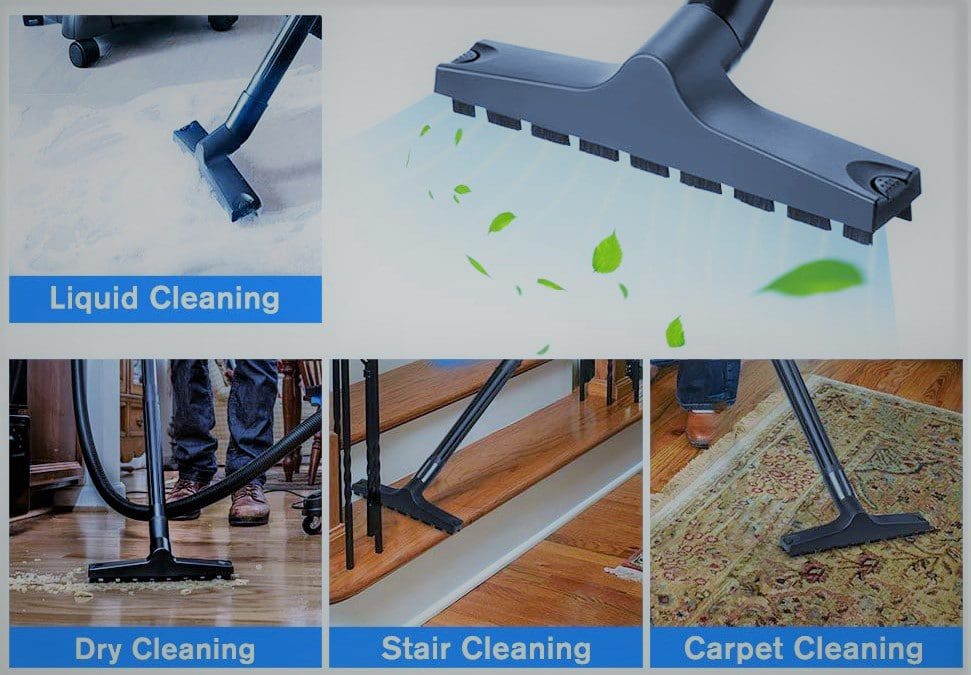
To ensure optimal performance and longevity of your shop vacuum, it is crucial to maintain and improve the efficiency of the filter. Following the right practices can help you achieve this goal and make the most of your vacuum cleaner.
Choosing the Right Filter
Selecting the appropriate filter for your shop vac is essential for effective cleaning and maintaining the vacuum’s performance. Different filters are designed for various tasks, so it’s important to choose one that suits your specific needs. Some common types of filters include:
- Standard cartridge filters: Ideal for everyday use and capturing common household debris, such as dust, dirt, and small particles.
- Foam sleeve filters: Designed for wet vacuuming, these filters can handle moisture without getting damaged.
- Fine dust filters: Suitable for capturing fine particles like drywall dust, fireplace ash, or sawdust from woodworking projects.
- High-efficiency filters: Designed to capture even smaller particles, such as allergens and mold spores, these filters are perfect for those with sensitivities or allergies.
Regular Maintenance and Replacement
Proper care and maintenance of your shop vac filter are crucial for the vacuum’s performance and longevity. To ensure the filter remains in good condition, follow these tips:
- Inspect and clean the filter regularly: Depending on the frequency of use and the type of debris, your filter may require more frequent cleaning. Check the filter after each use, and if necessary, clean it according to the manufacturer’s instructions. Some filters are washable, while others may require tapping or brushing to remove accumulated debris.
- Replace the filter as needed: Over time, filters will wear out and become less effective. Keep an eye on the filter’s condition and replace it when necessary, following the manufacturer’s recommended schedule.
- Store the filter properly: When not in use, store the filter in a dry and clean place to prevent it from becoming damaged or contaminated.
Proper Vacuum Usage
Using your shop vac correctly can also contribute to the performance of the filter. Keep these tips in mind:
- Adjust the vacuum’s settings: Some shop vac models have adjustable suction levels. Ensure you are using the appropriate setting for the type of debris you are cleaning to prevent overloading the filter.
- Don’t overfill the collection bag: Regularly check and empty the collection bag to avoid reduced suction or filter damage caused by an overloaded bag.
- Follow manufacturer guidelines: Always adhere to the recommendations and guidelines provided by the vacuum’s manufacturer to ensure proper use and filter performance.
By following these suggestions and practices, you can improve the performance of your shop vac filter, ensuring a cleaner and more efficient vacuuming experience.
Optimizing Usage in Various Environments
Incorporating a shop vac into different environments like garages or industrial settings requires a detailed understanding of accessories and filter options. This section delves into the utilization of accessories, filters, and containers to maximize efficiency in heavy-duty tasks.
Filterless Operations and Accessories
For filterless operations, particularly in industrial settings, understanding the role of various accessories is crucial. The use of a Ridgid shop vac, known for its heavy-duty capabilities, enhances dust collection efficiency. Accessories like a foam filter or a HEPA filter bag can be critical in managing fine dust particles, especially when a filterless approach is adopted.
Vacuum Bags and Dust Collection
In a garage or household setting, the choice between a vacuum bag and a dust collector is vital. While vacuum bags, such as the Ridgid vacuum bag or vac dust bag, are suitable for smaller, more frequent clean-ups, a dust collector unit is more efficient for larger debris. Choosing the right bag, like a HEPA filter bag, is essential for ensuring effective dust management.
Containers and Wet Filters
The container of the shop vac plays a significant role, especially when switching between dry and wet surfaces. A wet filter is essential when dealing with liquids, and the container’s capacity determines the vacuum’s efficiency in different environments. Units designed for heavy-duty use often have larger containers, suitable for industrial-scale clean-ups.
Attachments and Tools
Attachments and tools enhance the functionality of shop vacs, making them versatile for various tasks. From standard nozzles to specialized attachments for ridged surfaces, these tools expand the capabilities of both industrial and household vacuums. The right attachment can transform a basic shop vac into a multifunctional unit, capable of handling diverse cleaning challenges.
Filters and Maintenance
Regular maintenance of shop vac filters, whether in a garage or an industrial environment, is crucial. Keeping a stock of shop vac filters, including foam filters and vac dust bags, ensures uninterrupted operation. Regularly replacing and cleaning these filters maintains the vacuum’s efficiency and longevity.
:Accessories and Filters
| Accessory/Filter Type | Best Use Environment | Features |
|---|---|---|
| HEPA Filter Bag | Industrial, Garage | Traps fine dust, allergens |
| Vac Dust Bag | Household, Garage | Easy disposal, frequent use |
| Foam Filter | Wet environments | Protects motor during wet vacuuming |
| Ridgid Vacuum Bag | Heavy-duty tasks | Durable, large capacity |
| Dust Collector Unit | Industrial | Efficient for large debris, continuous use |
| Wet Filter | Any (for liquids) | Essential for liquid messes |
| Standard Attachments | Household, Garage | Versatile for everyday cleaning |
| Specialized Tools | Industrial | Tailored for specific tasks |
By understanding and utilizing these accessories and filters appropriately, users can significantly enhance their cleaning efficiency, whether in a household, garage, or industrial setting.
Frequently Asked Questions
1. What happens if you use a shop vac without a filter?
The short answer is, you will reduce the lifespan of your shop vac. While it’s possible to use a shop vacuum without a filter when vacuuming wet surfaces or using water as filtration, these methods do not fully protect the machine from clogging and eventually breaking down.
Another thing that may occur if you use the wet dry vac without a filter is dust blowing back up on your face. The filter plays a significant role in preventing dust from getting into the vacuum’s components and coming back through the exhaust. Getting rid of it will make what you are doing useless because most of the dust will go back anyway.
If you’re noticing that your shop vac is blowing out air, it could be due to a number of reasons. Check out our detailed guide on why your shop vac might be blowing out air for more information.
2. Can you use a shop vac in standing water?
Yes and no. Yes, because you can use a shop vac as a water pump when you have a small flood in the house or outside. All you need is to remove the filter (if the manufacturer’s instructions allow) and dust bag, and connect the vacuum to a hose where the water will pass through as it goes out.
However, you cannot use a shop vac to suck a lot of standing water. If you are thinking of swimming pool water, ponds, and boreholes, the vacuum isn’t strong enough to get rid of all that water, and you could end up breaking it.
3. Why does my filter keep blowing dust back?
A couple of reasons could cause this; one, the filter is not installed correctly, and two, there is a hole in the motor or the filter itself. You could start by checking these two and changing the filter if it’s not new. However, the reason could also be that the dust you are sucking is too fine or smooth, in which case you will need a filter with a high-efficiency disposable bag.
4. Do I need a filter for wet vac?
The role of a filter is to stop dust from blowing back out when cleaning and going inside the vac. If you are cleaning wet surfaces however, you do not need the filter. It’s recommended you remove the filter when doing a wet vacuum to avoid damaging it. That said, some vacuum cleaners come with a foam sleeve filter which you don’t need to remove because it protects debris from ending up in the motor.
Further Reading
- For those looking to minimize noise without compromising on power, discover our comprehensive guide on the Best Quiet Shop Vac options available, perfect for both home and professional use.


